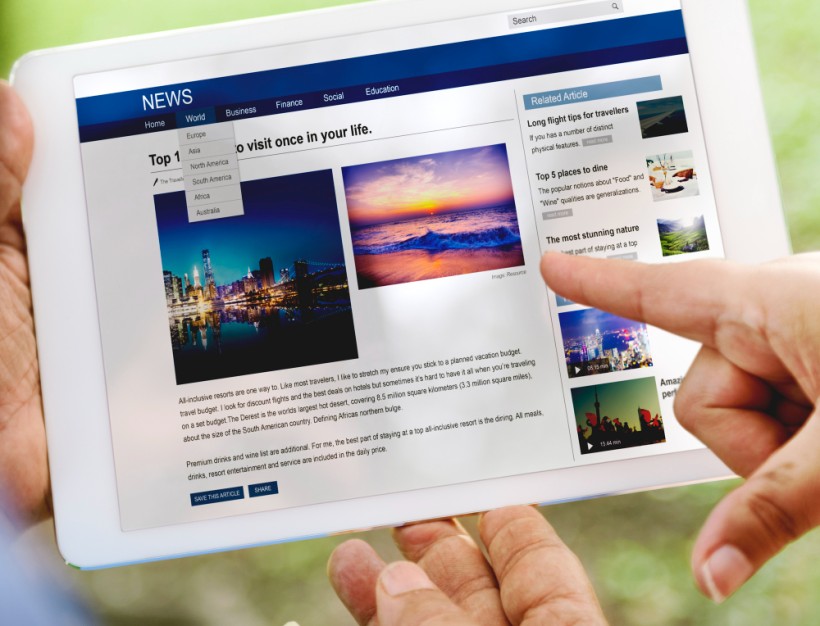LinkedIn helps founders build trust and authority while connecting with decision-makers through content.
SEO helps companies capture search engine traffic when prospects are actively looking for solutions.
Both are powerful, but each has its place — and you don’t always have to choose (more on that later).
Let’s break down when to use LinkedIn vs SEO, the pros and cons of each, and how factors like your sales model, SEO efforts, and LinkedIn content strategy should influence your decision.
Start with your product, audience, and sales motion
Your marketing channels should follow your business model — not the other way around. Three key factors will guide you toward either LinkedIn content marketing or SEO: your audience, product, and sales motion.
1. Your audience
- Do your prospects hang out on LinkedIn? If your buyers are professionals — especially executives, founders, or technical leaders — they’re likely scrolling LinkedIn. 48.5% of LinkedIn’s 1 billion users engage monthly, and 134.5 million log in daily (The Social Shepherd).
- Are they searching for solutions? If your customers head straight to Google, SEO content marketing is the obvious choice. 68% of online experiences start with a search engine, and Google SEO dominates with a 91.54% market share (Ahrefs).
2. Your product
- High-ticket B2B services: If you’re selling a product or service that requires education and trust, LinkedIn can get you in front of decision-makers while your content builds authority.
- Low-touch SaaS or transactional services: If customers already know to search for a category — like “CRM software” or “email marketing tools” — SEO can deliver more scalable, long-term results.
Example:
We worked with a SaaS company that sold a $99/month tool. They used LinkedIn content initially to test their messaging. Once they found the right positioning, they shifted to SEO and used Google Keyword Planner to find relevant SEO keywords. After 18 months, SEO generated 70% of their traffic.
3. Your sales motion
- Founder-led or sales-led: LinkedIn content wins here. Thought leadership helps founders build credibility, nurture relationships, and pre-sell their expertise.
- Marketing-led: SEO works well when you’ve nailed your positioning and want to attract consistent demand.
Example:
A founder-led agency we worked with relied on referrals. After publishing a few technical LinkedIn articles and optimizing their LinkedIn profile, their visibility skyrocketed. Within 90 days, their profile visibility doubled, and they started receiving qualified inbound leads.
Pros and cons: LinkedIn vs. SEO
Each channel has its strengths and weaknesses. Here’s a quick comparison of both, starting with LinkedIn:
| LinkedIn Pros | LinkedIn Cons |
| Faster feedback: You can test ideas and messaging daily. | Time-intensive: You need to post consistently to stay top-of-mind. |
| Trust-building: Personal content builds relationships and credibility. | LinkedIn algorithm shifts: LinkedIn’s algorithm can change how posts are distributed. |
| LinkedIn SEO benefits: Optimizing your LinkedIn page with keywords helps you rank for searches within the platform. |
Here are the pros and cons of SEO:
| SEO pros | SEO cons |
| Captures intent: SEO captures traffic when prospects are actively looking for solutions. | Slow payoff: SEO efforts can take weeks or months to deliver results. |
| Scales over time: Once content ranks, it can generate traffic for years. | Competitive landscape: Popular keywords often require backlink building. |
| Keyword-driven strategy: SEO tools like Google Keyword Planner and search engine optimization techniques let you target high-intent queries. |
When should you invest in LinkedIn first?
LinkedIn should be your first marketing play if:
- Your sales motion is founder-led: LinkedIn helps you build trust fast — especially if you’re using LinkedIn SEO strategies to improve your content’s reach.
- You sell high-ticket B2B services: If each deal is worth thousands of dollars, a single client can cover your LinkedIn platform investment.
- You need rapid feedback: LinkedIn content reveals what resonates with your audience almost immediately.
Example:
One of our clients sells a $5k+/month consulting service. Within 60 days of consistent LinkedIn posts and a targeted ad strategy, they hit 100,000+ impressions and generated inbound leads . They didn’t have to wait for SEO — they needed pipeline now.
When should you invest in SEO first?
SEO might be the better bet if:
- Your sales motion is marketing-led: Website SEO efforts can build a steady flow of traffic.
- You have a self-serve product: If prospects already search for your category, SEO can capture that demand.
- You’re entering a mature market: SEO helps you stay competitive when competitors already dominate LinkedIn.
Example:
A client selling a team productivity app initially struggled with lead flow. We built an SEO content plan, focusing on low-competition keywords. Within a year, SEO drove 60% of their demo requests.
Why a hybrid strategy works best
LinkedIn and SEO don’t have to compete. They actually work better together.
- Use LinkedIn content to test ideas and build relationships.
- Use SEO to capture high-intent traffic and scale visibility.
Example:
We often repurpose our best-performing LinkedIn posts into SEO articles. LinkedIn helps us test which ideas resonate, while SEO provides long-term visibility in search engines.
Stage-based framework: When to focus on LinkedIn vs. SEO
Early-stage:
- Use LinkedIn to test messaging and build early trust.
- Focus on LinkedIn SEO optimization by adding relevant keywords to your profile, posts, and LinkedIn articles.
Growth-stage:
- Add SEO when you’re ready to scale beyond your network.
- Focus on bottom-of-funnel SEO keywords first.
Mature stage:
- Run both LinkedIn and SEO efforts simultaneously.
- Optimize your content to improve your LinkedIn search visibility while ranking for key search terms in Google.
Content requirements for LinkedIn vs. SEO
LinkedIn content
- Write a LinkedIn post 3-5 times per week to stay visible (here are some LinkedIn post ideas).
- Focus on industry insights and personal stories to build trust.
- Optimize your LinkedIn presence by including relevant keywords in your headline, summary, and posts.
SEO content
- Publish 2-4 articles per month for steady growth.
- Target high-intent search terms first. Here’s how we approach keyword research.
- Use tools like Google Keyword Planner to identify keyword opportunities.
- Build backlinks through partnerships and guest posts — backlinks remain one of the most important SEO ranking factors.
Combining the two: LinkedIn SEO
When we talk about LinkedIn vs SEO, most people assume it’s a strict choice between two completely different strategies. But there’s a middle ground that merges the best of both worlds: LinkedIn SEO.
LinkedIn SEO uses search engine optimization principles to make your LinkedIn content, profile, and company page easier to find — both on LinkedIn and through search engines like Google.
Done right, LinkedIn SEO helps your profile rank higher when prospects search for industry-related terms, giving you more organic visibility without relying entirely on Google SEO.
How a LinkedIn SEO strategy works
LinkedIn SEO bridges the gap between social media engagement and traditional search engine optimization. Here’s how it works:
- LinkedIn’s Internal search engine: When someone searches for a keyword like “sales automation consultant” on LinkedIn, the platform prioritizes profiles, pages, and posts optimized with those terms. Using the right LinkedIn SEO ranking factors ensures you appear in those results.
- Google indexing of LinkedIn content: LinkedIn pages, profiles, and articles are indexed by Google. A well-optimized LinkedIn article can rank for industry-related keywords just like a blog post on your website. In fact, a LinkedIn article often benefits from LinkedIn’s strong domain authority, giving you an edge over newer websites when it comes to search engine optimization.
- Keyword synergy across platforms: The keywords that help you rank in Google SEO can also help you rank within LinkedIn’s search engine — if used strategically. This makes LinkedIn SEO an effective way to align your social media and SEO efforts.
How to get started with LinkedIn SEO
Getting started with LinkedIn SEO isn’t complicated. You just need to apply the same principles you’d use in a traditional SEO strategy, but within LinkedIn’s ecosystem.
1. Optimize your LinkedIn profile
- Add target keywords to your headline, about section, and experience descriptions.
- Use tools like Google Keyword Planner to find high-intent keywords that prospects might search for.
- Don’t forget to include variations — like “B2B SaaS marketing” and “SaaS marketing for startups” — to cover more search intents.
2. Publish keyword-rich LinkedIn content
- Write a LinkedIn article (or three) that dives deep into your industry’s key topics.
- Use keywords naturally — LinkedIn SEO ranking factors reward relevance, not keyword stuffing.
- Repurpose high-performing LinkedIn posts into LinkedIn articles with SEO keywords in the title, headings, and body text.
Tip: Want to test keyword performance quickly? Use short LinkedIn posts to gauge engagement. If a post gets traction, expand it into a long-form LinkedIn article and optimize it for both LinkedIn SEO and Google SEO.
3. Leverage your LinkedIn Page for company-level SEO success
- Add relevant industry keywords to your LinkedIn page’s tagline, description, and custom URL.
- Use our LinkedIn SEO guide to find tips for improving your company’s search visibility.
- Encourage employees to engage with your company’s content to increase its reach.
4. Track and adjust your strategy over time
- Monitor which posts and profiles appear in LinkedIn search results.
- Use LinkedIn analytics tools to track profile views and keyword performance.
- Keep optimizing your LinkedIn presence as your business evolves.
Final thoughts on LinkedIn vs SEO: Start where you’ll see results fastest
SEO and LinkedIn can both work — but for most B2B companies, it makes sense to start with the LinkedIn platform.
You’ll get faster feedback, build relationships with decision-makers, and start seeing inbound leads sooner. Once you’ve nailed your messaging and want to scale, layer SEO on top.
But the best-performing companies don’t pick one channel over the other — they use both.
Need help growing your LinkedIn presence and attracting leads?
At Column, we help founders turn their expertise into LinkedIn content that drives real results — while you focus on running your business. Get in touch to discuss how we can help.





